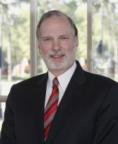
Joseph E. Bavaria, MD, President
STS News, Summer 2016 -- As surgeons, we are on an eternal quest to achieve the best outcomes for our patients. The questions we ask ourselves include: Should we perform an invasive procedure or can we use a minimally invasive approach? Which valve do we use? Which access point is the best? The answers often lie in results from research based on quality data.
Prescient leaders of the Society, including Richard Clark, Bob Replogle, Dick Anderson, and Fred Grover, among others, launched the STS National Database in 1989 so that we could use high-quality, risk-adjusted clinical data for practice improvement.
The STS National Database now houses more than 6 million procedure records and has become the envy of many other specialty societies. Data from the Database form the foundation for groundbreaking clinical research, participation in the Database is at the heart of new physician payment models being developed in Washington, and processes for the Database are setting important and unifying standards worldwide.
Similarly, the Transcatheter Valve Therapy Registry that STS and the American College of Cardiology launched in 2011 offers rich opportunities for innovation in cardiothoracic surgery. You can read about some of the latest clinical trial results for TAVR.
These findings and the resulting positive changes for our patients would not have been possible without someone trying to scratch an itch by asking the right questions and conducting research. Finding the answers starts with good data.
When I’m socializing with colleagues, the conversation often turns to job frustrations and then leads into how STS can help.
One way is through the STS National Database. By submitting data to the Database, publicly reporting outcomes, and conducting research, you can help improve your practice and the specialty itself.
In this era of increasing demand for transparency, accountability, and access to quality data, STS leadership is placing an even higher priority on the Database. In the coming months, the user interface will be modernized so that participants can enter data continuously and receive next-day feedback of basic information. Customizable participant reports will help make it easier to detect important performance signals early.
We’re also working on making data elements conform to electronic standards, which will facilitate linkages with other data sources and allow some information, such as demographics, dates, and times, to be extracted automatically from EHRs.
Additionally, we have increased funding for Access & Publications (A&P) projects to help more investigators access data for research.
Submitting Data Requests
Some of our members have said that submitting requests to use STS data can be daunting. But it doesn’t have to be.
Make sure the research proposal you submit is realistic, has an original hypothesis, and asks for data that the STS National Database collects; submission instructions and data endpoints are listed on the website.
STS accepts several types of data requests. Forms are available on the STS website, and Research Center Coordinator Kristin Mathis is available to answer any process questions you may have.
Research proposals made through the A&P process are reviewed twice per year in each discipline. For the upcoming review cycle, adult cardiac proposals are due on August 1, general thoracic proposals are due on September 1, and congenital heart proposals are due on October 1.
Once you have your research results, it is important to share that new knowledge.
Two projects currently in the manuscript development process involve one from Penn on longitudinal outcomes following surgical repair of post-infarction ventricular septal defect and one from The University of Chicago on the relationship between body mass index extremes and morbidity after lung resection.
Research projects also may be submitted through the Longitudinal Follow-up and Linked Registries process. Read about one of these types of projects on biomarkers to predict readmission.
The TVT Registry currently has more than 63,000 patient records submitted from more than 400 sites in the United States. I encourage you to consider helping us build the body of knowledge about transcatheter procedures by using data from the TVT Registry for research. Expanding our understanding of transcatheter therapy, coupled with our surgical valve experience and knowledge, will enable surgeons to assist patients in making informed decisions concerning valve therapy. The process for requesting data from the TVT Registry can be found at tvtregistry.org.
Presenting New Knowledge
Once you have your research results, it is important to share that new knowledge with your colleagues. My bias is for presenting that information at the STS Annual Meeting and in The Annals of Thoracic Surgery.
Although the deadline has passed to submit an abstract for presentation consideration at the upcoming STS Annual Meetingin Houston, we plan to open a late-breaking abstract submission site this fall.
I’m looking forward to reading your abstracts and learning more about the questions you have about cardiothoracic surgery, so that by using quality data, we can work together to make positive incremental changes for our patients and the specialty.